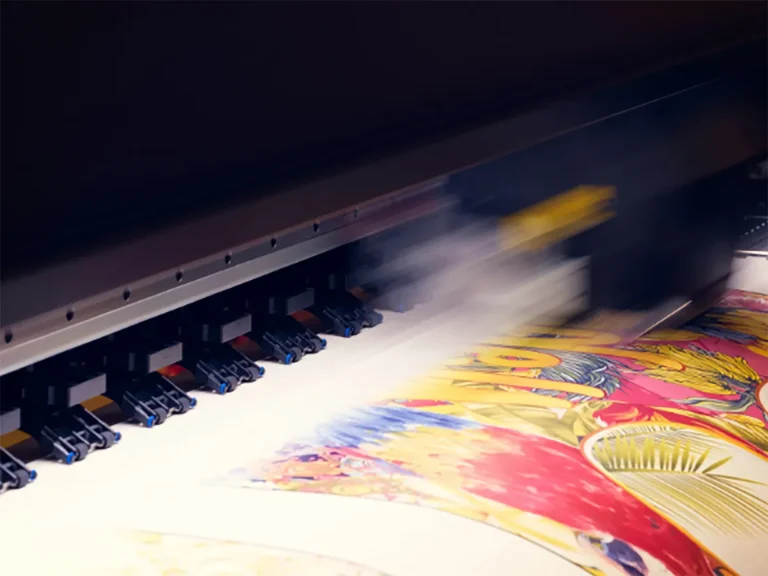The future of DTF is set to revolutionize the printing industry, ushering in a new era filled with remarkable advancements and innovations. Direct to Film (DTF) technology is at the forefront of this transformation, offering enhanced print quality and sustainability solutions that are increasingly critical in today’s market. With ongoing DTF printing innovations focusing on eco-friendly materials, brands are not only optimizing their production processes but also responding to the rising consumer demand for environmentally responsible methods. As trends in DTF evolve, we can anticipate significant improvements in heat transfer technology and new ink formulations that prioritize both vibrancy and environmental consciousness. This introduction to the future of DTF technology illustrates an exciting path forward that balances creativity with sustainability, transforming the way we think about printing.
As we explore the emerging landscape of Direct to Film (DTF) processes, it’s essential to consider the upcoming changes that will shape the future of this printing technology. DTF printing represents a shift toward more efficient and sustainable methods in the graphic arts field, where heat transfer applications enhance the overall quality of printed products. These advancements are not only redefining how we perceive traditional printing but are also influencing broader industry trends as businesses seek innovative solutions for higher durability and reduced environmental impact. The integration of eco-friendly practices within DTF technology is creating a new framework for print production that aligns with the growing demand for sustainable practices. Emphasizing these principles ensures that, as the future of DTF unfolds, it remains a pivotal player in the quest for quality and eco-consciousness in printing.
Emerging Innovations in DTF Technology
One of the most exciting developments in DTF technology is the implementation of cutting-edge materials that enhance the overall printing process. Printers today are focusing on utilizing advanced films that not only improve adhesion during the heat transfer process but also elevate the quality of prints. These innovations are crucial, as they allow for greater color vibrancy and sharpness, enhancing the aesthetic appeal of final products. Moreover, the introduction of biocompatible and sustainable materials reflects a broader shift towards ecological responsibility within the printing industry.
Additionally, the ongoing research in DTF technology has led to the creation of specialized inks designed to work seamlessly with these new films. Innovations like pigment inks that offer improved flexibility and durability are becoming mainstream, allowing prints to endure wear and wash cycles without significant degradation. As manufacturers continue to refine their processes, we can expect to see even more groundbreaking technologies aimed at optimizing print quality and operational efficiency.
Frequently Asked Questions
What are the expected advancements in DTF technology for eco-friendliness?
The future of DTF technology is heavily focused on sustainability, with innovations in eco-friendly ink formulations becoming standard. This shift includes using low-VOC inks that reduce environmental impact, thereby catering to the growing demand for sustainable products among consumers.
How will heat transfer technology impact the future of DTF printing?
Advancements in heat transfer technology are set to enhance the future of DTF printing by improving print durability and operational efficiency. Innovations in adhesives and machinery designs streamline production processes, making DTF printing more reliable and cost-effective while ensuring high-quality output.
What trends in DTF printing innovations should businesses watch for?
Key trends in DTF printing innovations include enhancements in print quality, the adoption of sustainable materials, and increased efficiency through advanced heat transfer techniques. As the industry evolves, businesses will need to stay updated on these trends to remain competitive.
How does sustainability in DTF technology affect consumer choices?
Sustainability in DTF technology significantly influences consumer choices, as more individuals seek eco-friendly products. Brands that leverage sustainable practices, such as using low-VOC inks and environmentally conscious materials, can attract environmentally-aware customers, enhancing brand loyalty.
What industries are influenced by trends in DTF technology?
The trends in DTF technology are extending beyond textile printing into various sectors, including digital graphic design and even cryptocurrency. As DTF principles are applied creatively across industries, they open new avenues for collaboration and innovation.
How can businesses leverage trends in the future of DTF for competitive advantage?
To gain a competitive advantage, businesses must leverage trends in the future of DTF by adopting sustainable practices, embracing innovations in heat transfer technology, and focusing on improving print quality. Staying agile and ready to adapt to these changes will be crucial for success in the evolving landscape.
| Key Points | Details |
|---|---|
| Introduction to DTF | DTF is advancing rapidly with new trends focusing on print quality, sustainability, and cost efficiency. |
| Enhanced Print Quality | DTF technology is seeing significant improvements in print quality with innovations in heat transfer technology and ink formulations, emphasizing eco-friendliness. |
| Sustainability Efforts | Manufacturers are increasingly using low-VOC inks to meet consumer demand for sustainable products, enhancing both safety and environmental impact. |
| Advancements in Heat Transfer Technology | New adhesives and machinery designs are improving the reliability, durability, and cost-effectiveness of the DTF printing process. |
| Broader Applications of DTF Principles | DTF concepts are emerging in sectors like cryptocurrency, highlighting collaborative innovation across industries. |
| Future Outlook | The future of DTF technology involves continued evolution towards higher quality and sustainability, driving competitive advantages for businesses. |
Summary
The future of DTF is expected to be vibrant, characterized by continual advancements in printing technology that prioritize sustainability and high-quality outputs. As industries adopt eco-friendly materials and better heat transfer techniques, DTF is not just a passing trend; it is becoming an essential technology with significant implications beyond textiles. Embracing these innovations will be crucial for stakeholders aiming to thrive in a competitive market while fostering sustainable practices. The evolution of DTF will likely inspire new solutions and collaborations, reinforcing its role as a cornerstone in the future of printing technology and beyond.


